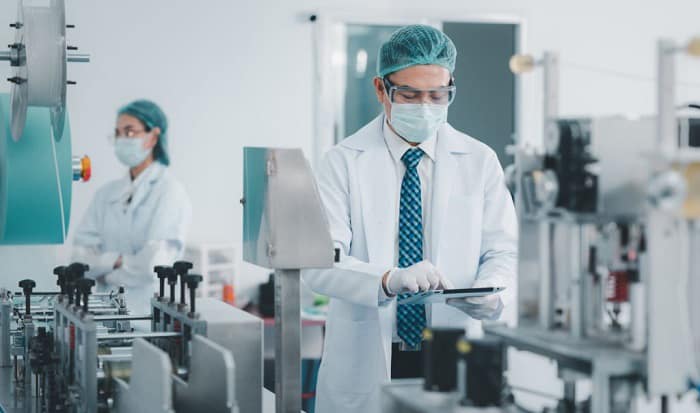For safety purposes, laboratories have a set of regulations that require instructors, workers, students, and anyone handling equipment to follow.
It is common knowledge that we must put on personal protective equipment before entering the lab. But, when should a lab coat, safety goggles, and gloves be worn in the laboratory? The answer is always.
Table of Contents
Requirements for Lab Safety Attire and Equipment
You must always put on a laboratory coat, a pair of certified safety glasses, and appropriate gloves when experimenting or simply monitoring experiments inside a laboratory.
You might, sometimes, be allowed to take some pieces off, but only when the instructors say so. Otherwise, all protective gear stays on throughout the process and until you are out of the laboratory.
Here’re some essential regulations applied for work in a chemistry lab:
- Nitrile gloves that are puncture and chemical resistant are required when handling laboratory equipment. They ensure no direct contact that can harm your hands or contaminate the chemicals and tools in the lab.
- The lab coat is provided and required of lab workers before entering the lab. Laboratories only accept protective coats made of 100% cotton and not from synthetic fibers. The piece must also be chemical and fire-resistant.
- Safety goggles allowed in laboratories must meet safety standards for blocking chemical splashes. The pair must provide no fogging, clear, and well-fitted wear for users.
If you have an eye condition, make sure to wear safety glasses with prescription lenses. Or, if you use contact lenses, it is required to wear safety goggles.
Conclusion
Now, when asked, “when should a lab coat, safety goggles, and gloves be worn in the laboratory?” you know the answer. Try your best not to violate any safety regulations put up by the laboratory. It is to protect yourself, the experiments, and everyone involved in the process.
Study and work safely! Thank you for reading! And feel free to share this article with your coworkers.

This is Edward Manning, the editor in chief of Construction Informer. Quite a bit of my time is spent researching the market and interviewing experts in the field so that I can give you reliable information.



